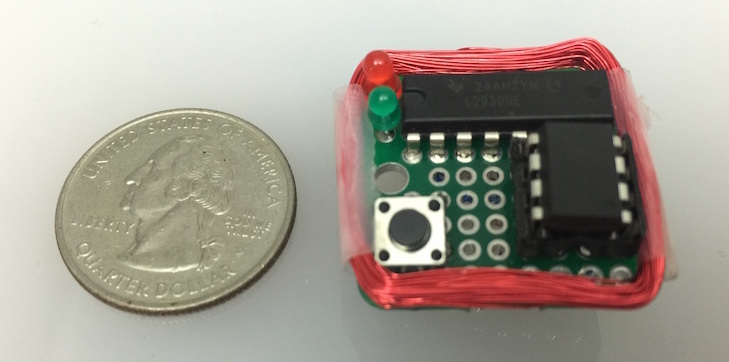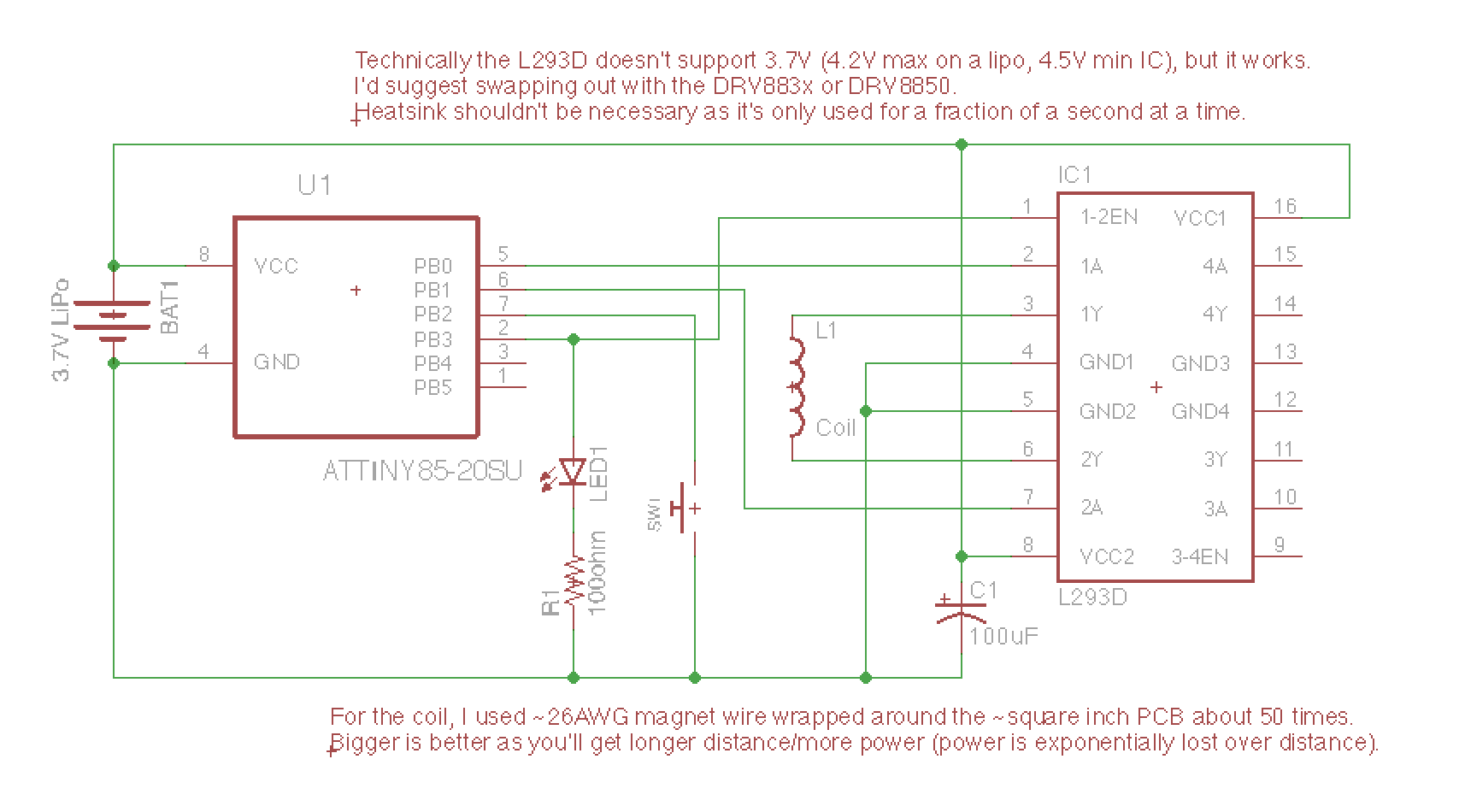-
Notifications
You must be signed in to change notification settings - Fork 15
2. MagSpoof
MagSpoof V5 is a device that can spoof/emulate any magnetic stripe or credit card. It can work "wirelessly", even on standard magstripe/credit card readers, by generating a strong electromagnetic field that emulates a traditional magnetic stripe card.
MagSpoof is a wireless penetration testing tool intended solely for use in authorized security audits, where such usage is permitted by applicable laws and regulations. Before utilizing this tool, it is crucial to ensure compliance with all relevant legal requirements and obtain appropriate permissions from the relevant authorities.
It is essential to note that the board does not provide any means or authorization to utilize credit cards or engage in any financial transactions that are not legally authorized. Electronic Cats holds no responsibility for any unauthorized use of the tool or any resulting damages.
| MagSpoof V5 Tech Specs | |||
|---|---|---|---|
| Name | MagSpoof V5 | ||
| Microcontroller | |||
| CH552G | |||
| USB connector | |||
| USB-C | |||
| Pins | |||
| Built-in LED Pin | 2 | ||
| Digital I/O Pins | 0 | ||
| Analog input pins | 0 | ||
| Analog output pins | 0 | ||
| PWM pins | 0 | ||
| External interrutps | 0 | ||
| Coil | 2 | ||
| UART | 2 | ||
| Buttons | |||
| Reset | 1 | ||
| S1 | 1 | ||
| Turn on Switch | 1 | ||
| Reset Switch | 1 | ||
| Connectivity | |||
| MagSpoof | TC4424 Microchip | ||
| Communication | |||
| UART | Yes | ||
| I2C | No | ||
| SPI | No | ||
| Power | |||
| I/O Voltage | 3.3V | ||
| Supported battery | Li-Po or Li-Ion, 3.7V | ||
| Battery connector | BT1 pin connector | ||
| Clock speed | |||
| Main Processor | CH552G 24 MHz | ||
| "RTC" | |||
| Memory | |||
| CH552G | 256 bytes of internal iRAM and 1KB of internal xRAM | ||
| Dimensions | |||
| Weight | 5 g | ||
| Width | 32.5 mm | ||
| Length | 76.5 mm | ||
| Thick | 0.8 mm | ||

SW1 and RST labels on the silkscreen of the board are exchanged. Please follow the "Pin assignment table" picture at the top of this page to use them the right way.
Find the schematics for the last version here → Hardware - MagSpoof V5

-
Atmel ATtiny85: This is the microcontroller to drive the entire system. It stores all of the magnetic stripe/credit card data. In a thinner, credit-card sized (0.8mm thick!) version, the version used was ATtiny10.
-
L293D H-Bridge: For driving the electromagnet. The L293D is a motor driver, but motors are actually driven by the electromagnet(s) and magnets inside them. Any standard driver should work here. Technically, the L293D doesn't work down to 3.7V (the voltage of the LiPo battery), but it works surprisingly well.
-
24AWG Magnet Wire (coil): This acts as the coil to produce the electromagnetic field. This piece of wire produces an electromagnetic field that makes the card reader believe a card is being swiped. Incredible. By rapidly controlling the polarization of this field, the magstripe reader believes the flipped bits of a real card are being swiped through the reader.
-
100mAh 3.7V LiPo battery (the power): A small 100mAh 3.7V LiPo battery powers the contraption.
-
100µF Capacitor: Keep enough energy in this capacitor to provide the electromagnet with power when we need it. Otherwise, it will pull too much current and reset the microcontroller.
-
LED: To signal to us when we transmit information.
-
100Ω Resistor: to not burn out the LED.
-
Momentary Switch: Initiate the electromagnet.
-
Mini-Protoboard: For soldering everything together.


-
Atmel ATtiny85: This is the microcontroller to drive the entire system. It stores all of the magnetic stripe/credit card data. In a thinner, credit-card sized (0.8mm thick!) version, the version used was ATtiny10.
-
TC4424 H-Bridge: For driving the electromagnet. The TC4424 is a motor driver, but motors are actually driven by the electromagnet(s) and magnets inside them. Any standard driver should work here. Technically, the TC4424 doesn't work down to 3.7V (the voltage of the LiPo battery), but it works surprisingly well.
-
24AWG Magnet Wire (coil): This acts as the coil to produce the electromagnetic field. This piece of wire produces an electromagnetic field that makes the card reader believe a card is being swiped. Incredible. By rapidly controlling the polarization of this field, the magstripe reader believes the flipped bits of a real card are being swiped through the reader.
-
100mAh 3.7V LiPo battery (the power): A small 100mAh 3.7V LiPo battery powers the contraption.
-
100µF Capacitor: Keep enough energy in this capacitor to provide the electromagnet with power when we need it. Otherwise, it will pull too much current and reset the microcontroller.
-
100Ω Resistor: To not burn out the LED.
-
Momentary Switch: Initiate the electromagnet.
-
Mini-Protoboard: For soldering everything together.

-
Atmel SAMD11: This is the microcontroller ARM Cortex M0+ of 32bits to drive the entire system. It stores all of the magnetic stripe/credit card data. In a thinner, credit-card sized (0.8mm thick!) version.
-
TC4424 H-Bridge: For driving the electromagnet. The TC4424 is a motor driver, but motors are actually driven by the electromagnet(s) and magnets inside them. Any standard driver should work here. Technically, the TC4424 doesn't work down to 3.7V (the voltage of the LiPo battery), but it works surprisingly well.
-
24AWG Magnet Wire (coil): This acts as the coil to produce the electromagnetic field. This piece of wire produces an electromagnetic field that makes the card reader believe a card is being swiped. Incredible. By rapidly controlling the polarization of this field, the magstripe reader believes the flipped bits of a real card are being swiped through the reader.
-
100mAh 3.7V LiPo battery (the power): A small 100mAh 3.7V LiPo battery powers the contraption.
-
100µF Capacitor: Keep enough energy in this capacitor to provide the electromagnet with power when we need it. Otherwise, it will pull too much current and reset the microcontroller.
-
100Ω Resistor: To not burn out the LED.
-
Momentary Switch: Initiate the electromagnet.
-
Mini-Protoboard: For soldering everything together.
-
Coil: SWC4242KB120-100 or WMRR138F-0
